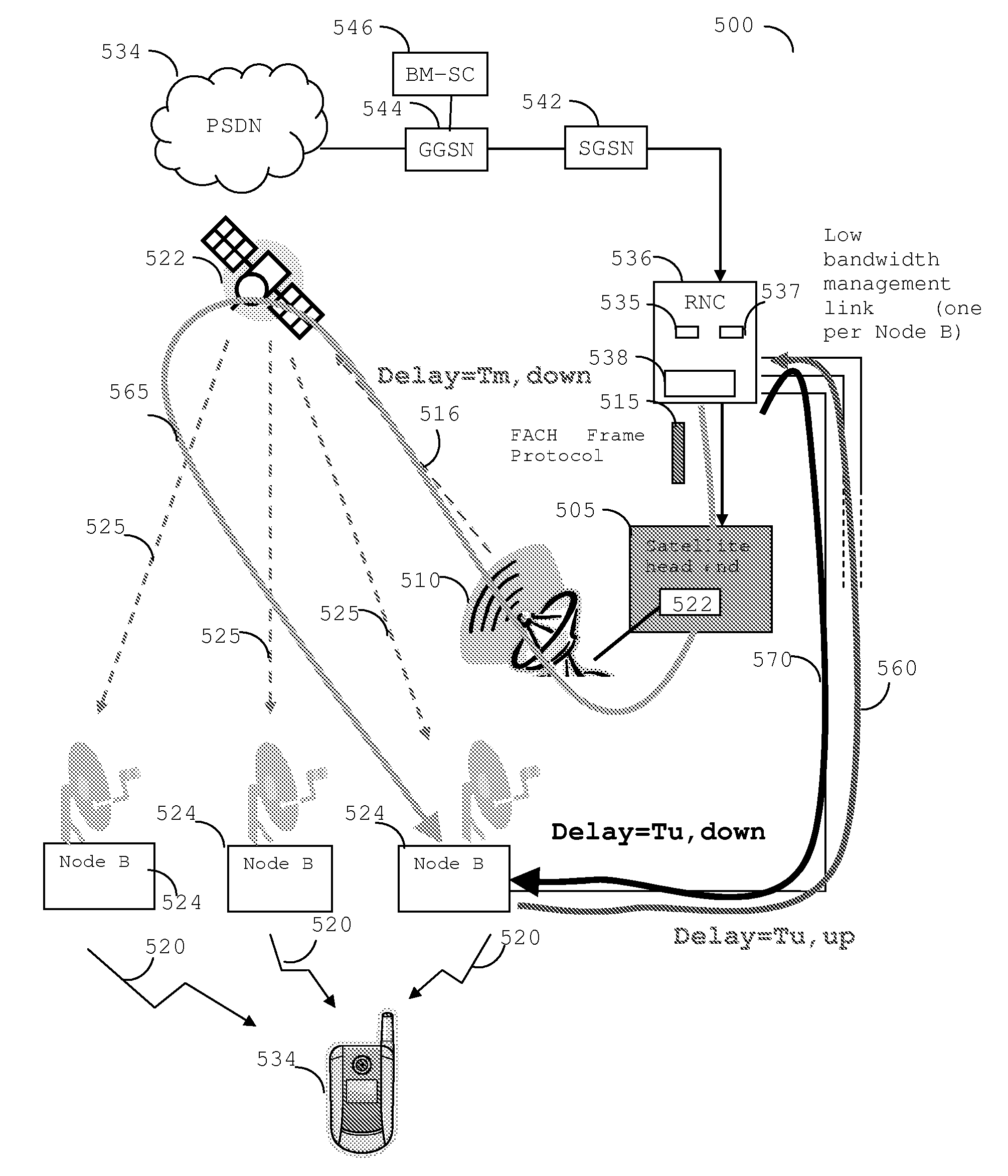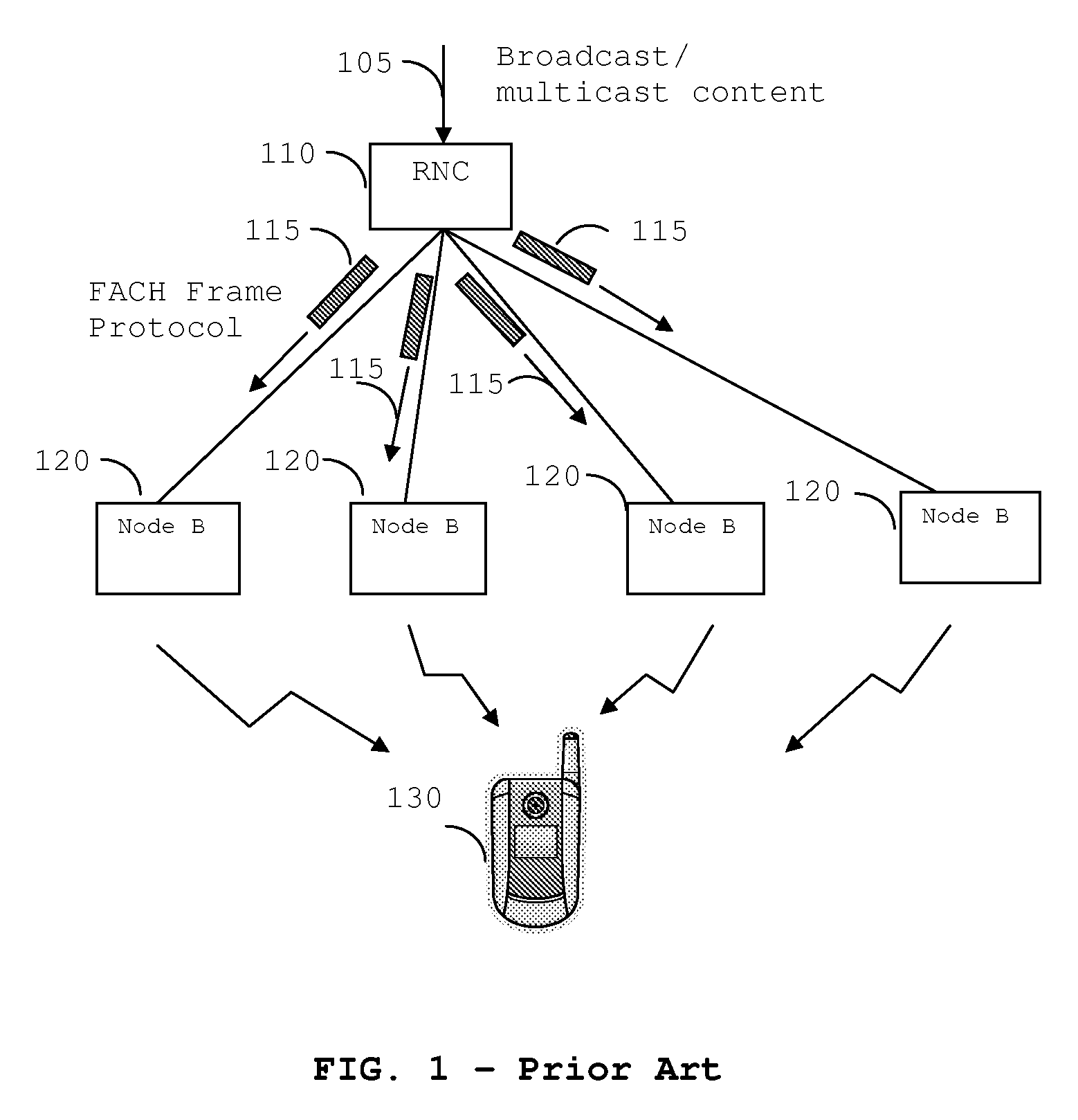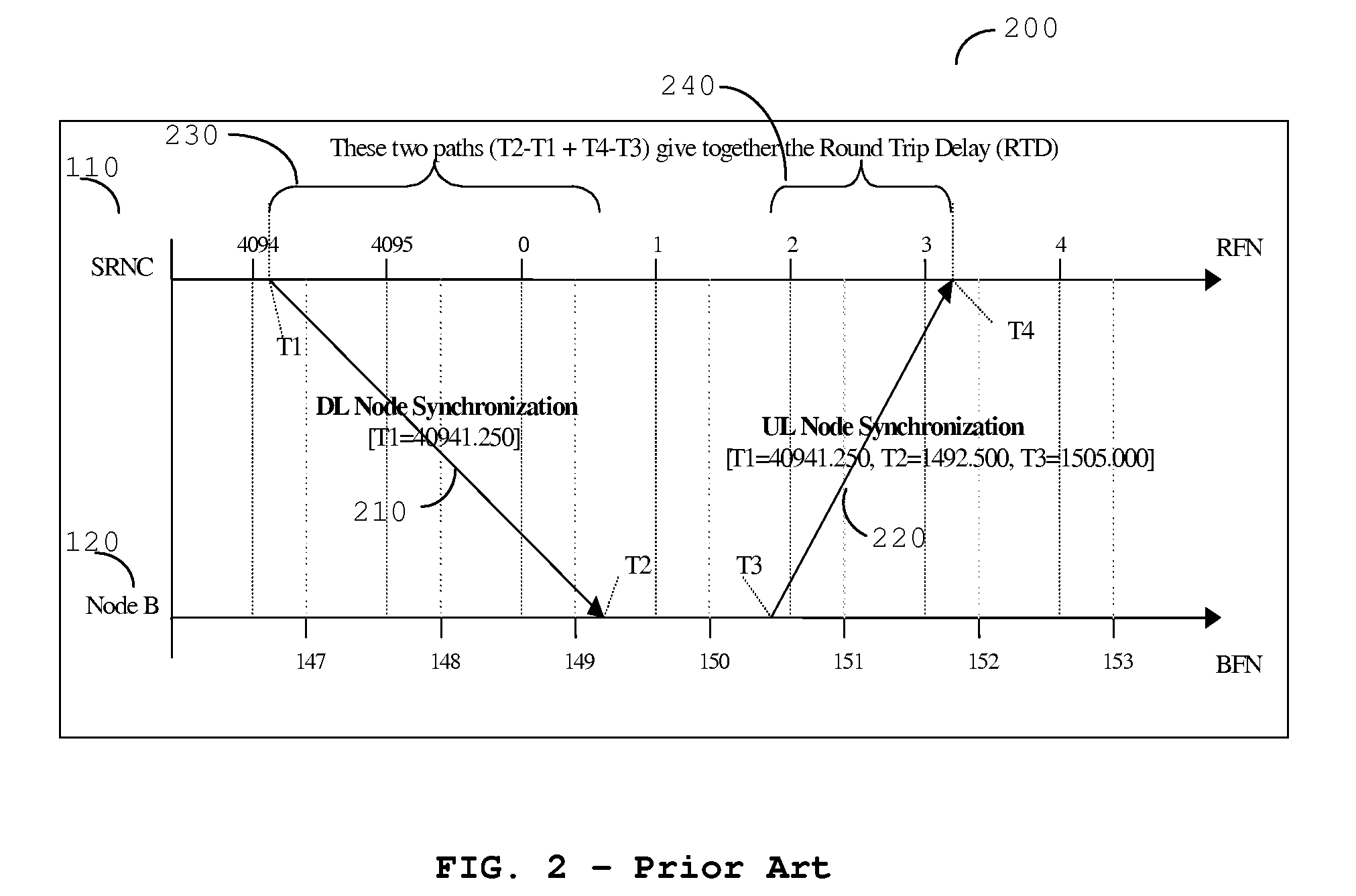Apparatus and method for determining timing for transmissions
a technology of transmission timing and apparatus, applied in the field of multicast transmission, can solve the problems of node b b>120/b> not being able to contribute to the soft combining of received data at the ue, incurred additional latency, and not being able to scale well to large number of node bs b>120, etc., to achieve the effect of alleviating one, reducing one, and reducing the other
- Summary
- Abstract
- Description
- Claims
- Application Information
AI Technical Summary
Benefits of technology
Problems solved by technology
Method used
Image
Examples
Embodiment Construction
[0053]The following description focuses on embodiments of the invention applicable to a UMTS (Universal Mobile Telecommunication System) cellular communication system, and in particular to a UMTS Terrestrial Radio Access Network (UTRAN) operating within a 3rd generation partnership project (3GPP) system. The inventive concept is concerned with the delivery of user plane content from the RNC to the Node B in a 3rd Generation Partnership Project (3GPP) Multimedia Broadcast Multicast Service (MBMS) system, as defined by 3GPP in “TS25.346—Introduction of the MBMS in the Radio Access Network”. This document provides a mechanism to deliver broadcast or multicast content to a number of subscriber devices over the 3GPP air-interfaces, time division CDMA (TDCDMA) and wideband CDMA (WCDMA).
[0054]However, it will be appreciated that the invention is not limited to the described communication system, but may be applied to other communication systems, for example to MBSFN (MBMS over a Single Fre...
PUM
 Login to View More
Login to View More Abstract
Description
Claims
Application Information
 Login to View More
Login to View More - R&D
- Intellectual Property
- Life Sciences
- Materials
- Tech Scout
- Unparalleled Data Quality
- Higher Quality Content
- 60% Fewer Hallucinations
Browse by: Latest US Patents, China's latest patents, Technical Efficacy Thesaurus, Application Domain, Technology Topic, Popular Technical Reports.
© 2025 PatSnap. All rights reserved.Legal|Privacy policy|Modern Slavery Act Transparency Statement|Sitemap|About US| Contact US: help@patsnap.com



